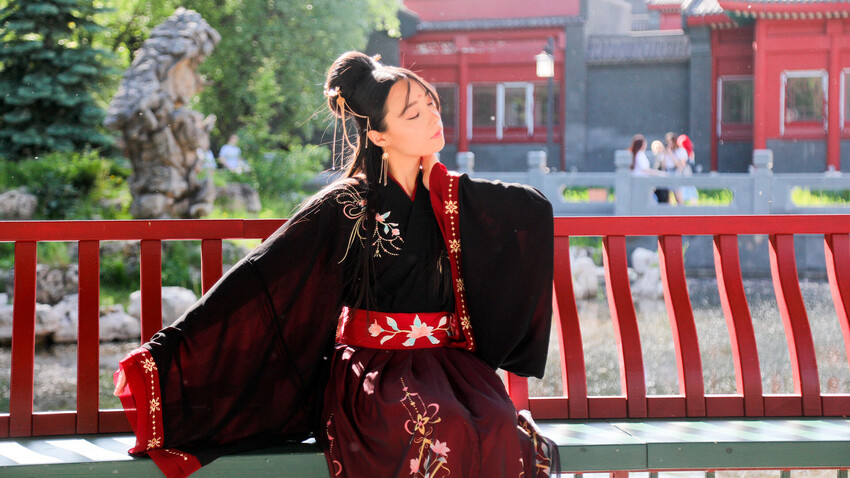
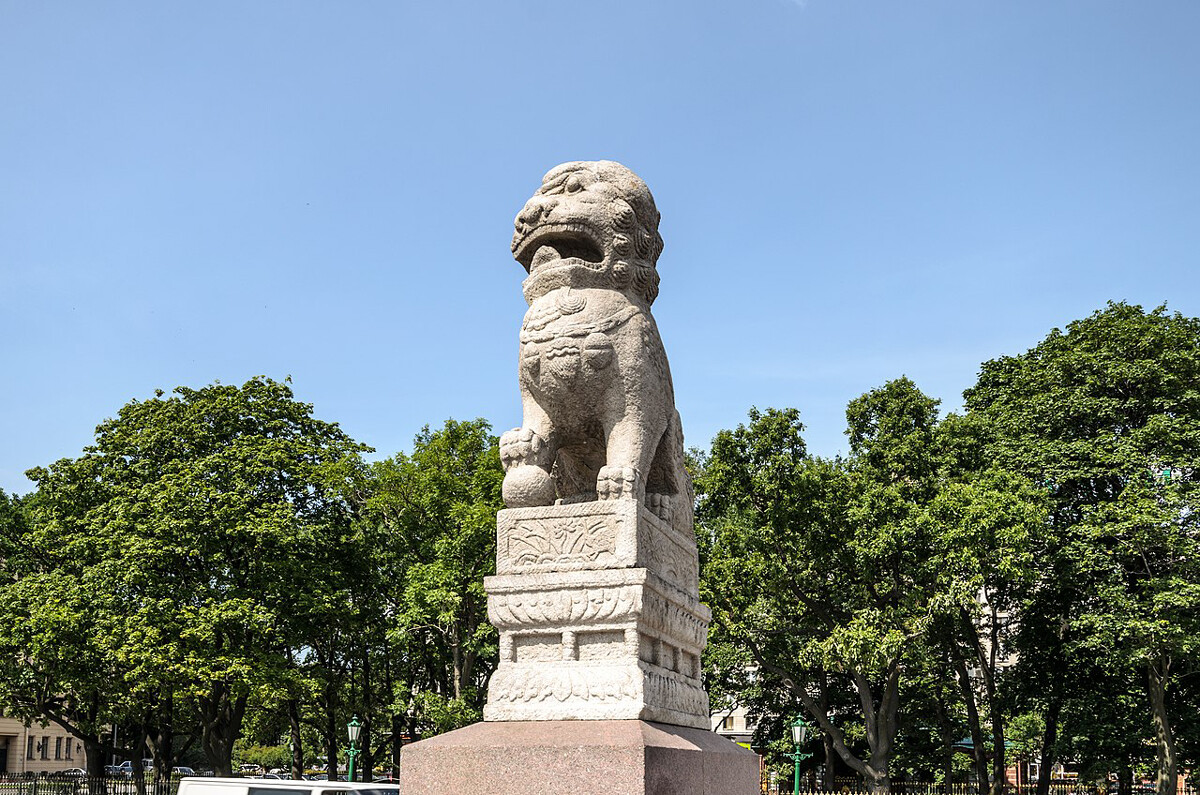
The granite figures of lions that guard the House of Peter I were brought to St. Petersburg from Manchuria in 1907. The magnificent ‘shi-tza’ installed on Petrovskaya Embankment are designed to protect from enemies and symbolize strength and power. By the way, it is no coincidence that both lions have open mouths: it is believed that, in this pose, they scare away evil spirits.
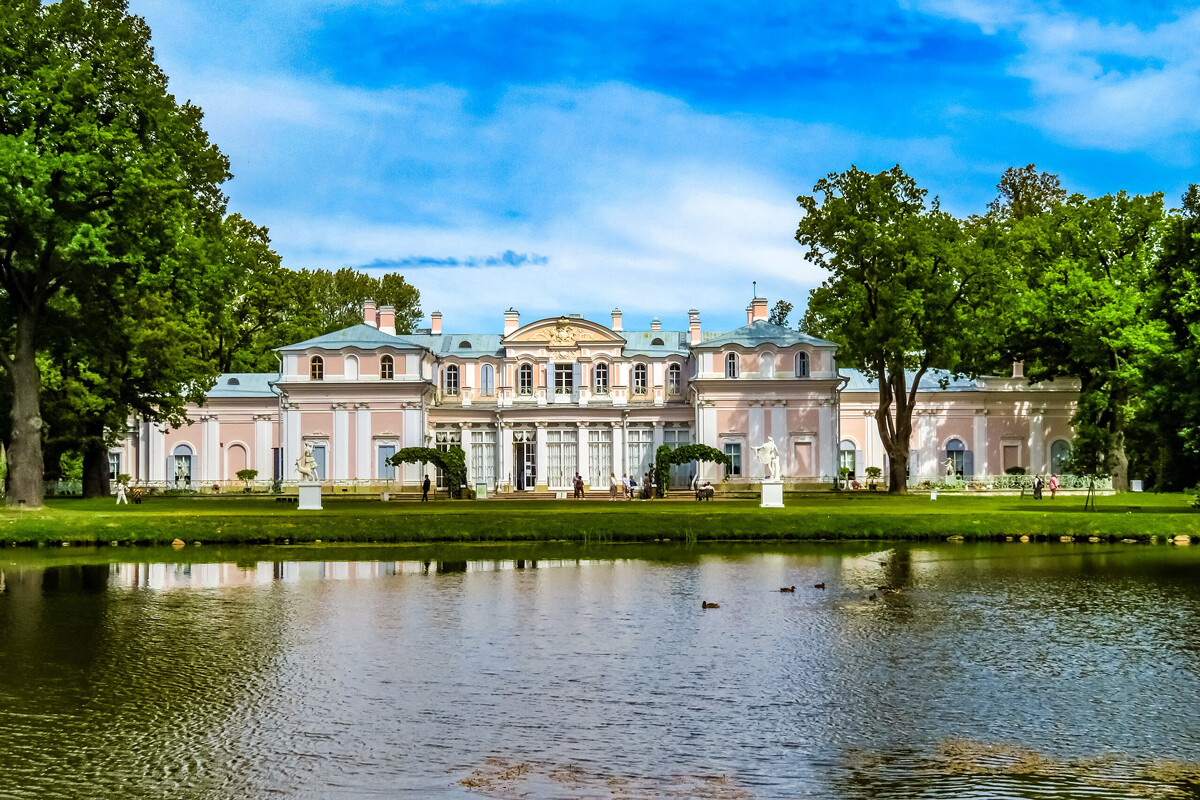
The personal residence of Catherine II was built by Antonio Rinaldi. The halls of this palace are decorated in chinoiserie style. Particularly impressive is the Glass Bead Cabinet: its walls are decorated with a dozen panels embroidered with silk thread and glass beads. Butterflies and birds flutter across the sparkling background and gilded frames resemble tree trunks.
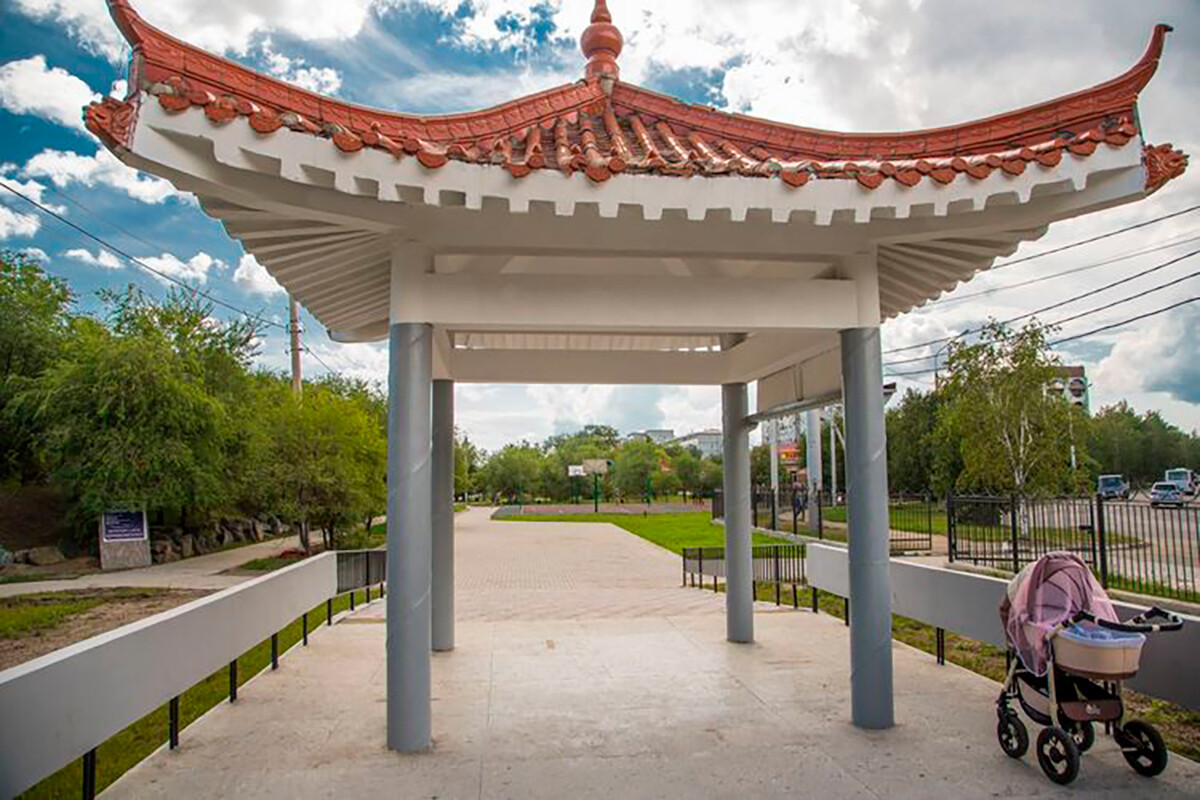
One of the very first Russian parks in the Chinese style. It has been in operation since 1995 and was built on the occasion of the resumption of Russian-Chinese relations. At the main entrance, visitors are greeted by ‘Shi Jixi’ lions. In the park, there is a Moon Bridge decorated with figures of dragons, a model of the Great Wall of China and various pagodas and thematic sculptures - including a ‘Panda Family’ and a monument to Russian-Chinese friendship in the form of traditional musical instruments - the ‘Chinese lute’ (or ‘pipa’, a plucked string instrument) and the Russian ‘balalaika’.

This building in the center of Moscow was built for tea merchant Sergey Perlov in 1893. But, it didn’t always look like both a pagoda and a precious box at the same time. In 1896, Li Hongzhang, the Chancellor and Ambassador of China, was to attend the coronation of Nicholas II.
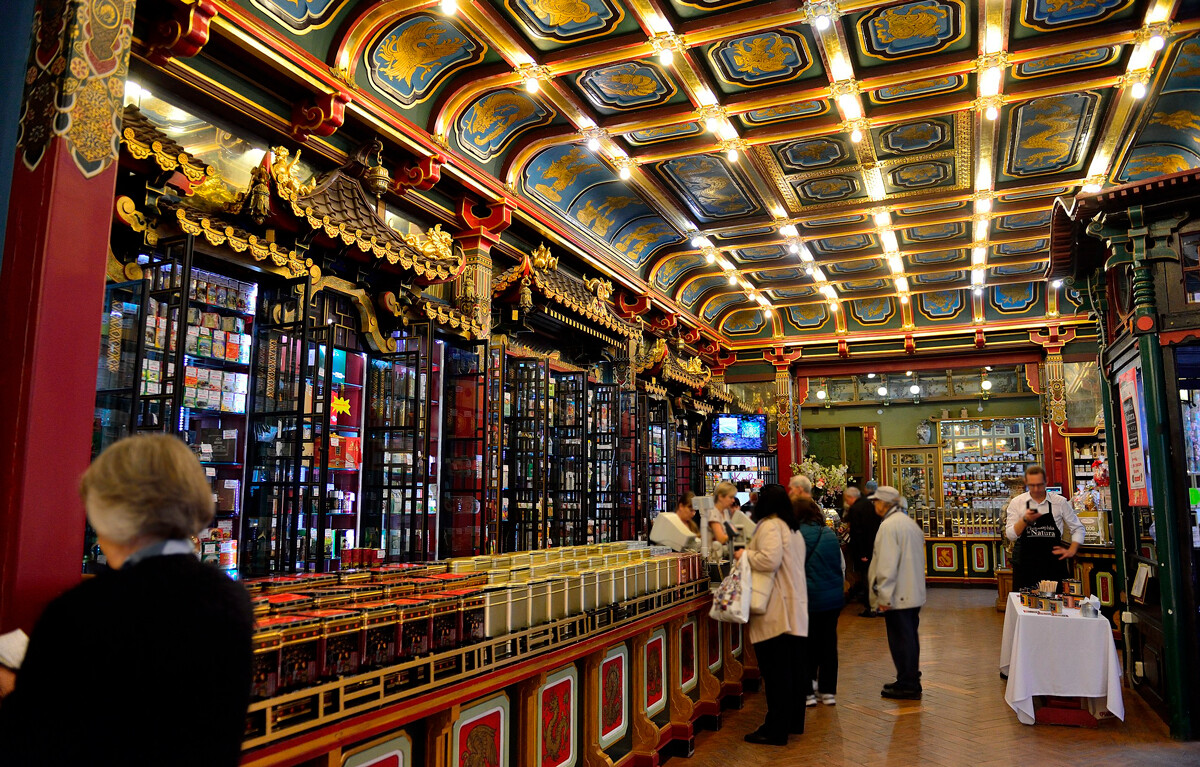
Perlov really wanted an important guest to stay there and ordered architect Karl Gippius to remodel the facade in the Chinese style. The ambassador ended up not staying here, but an amazingly beautiful building appeared on Myasnitskaya Street, which is still considered a main attraction of the city.
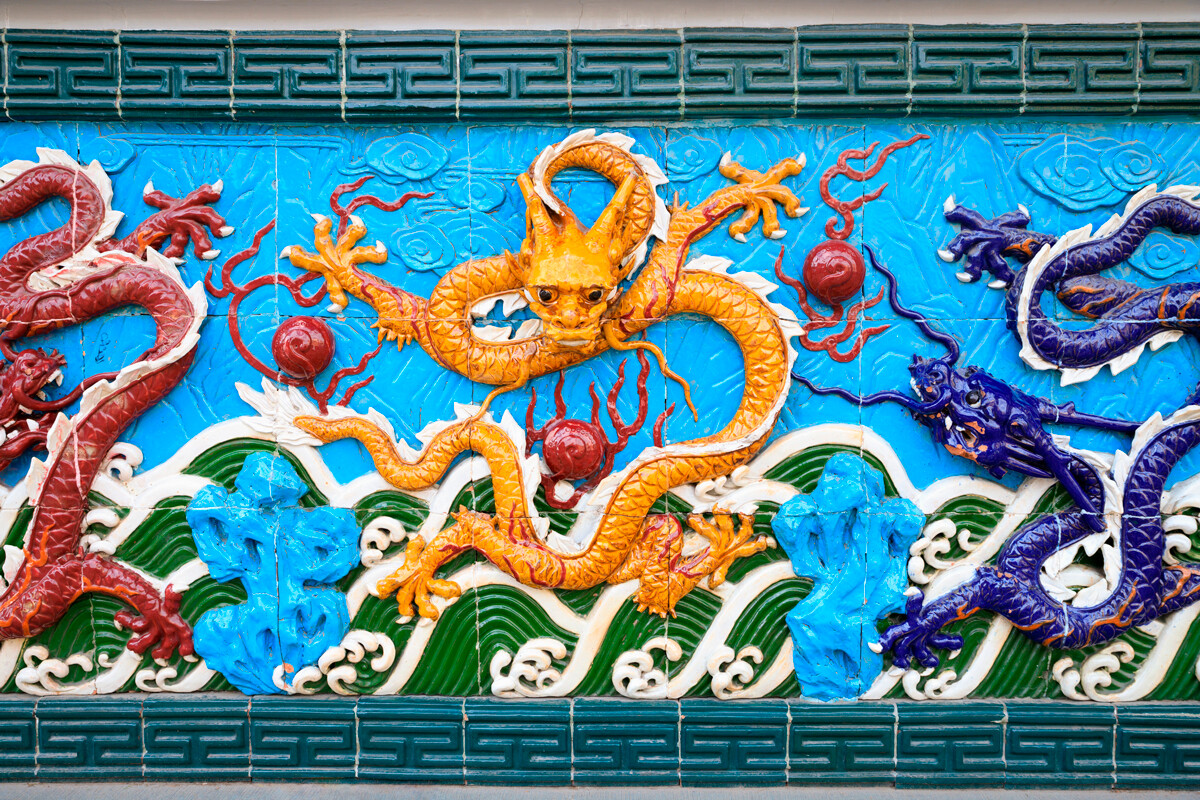
A mini-copy of the ancient ‘Garden of Joy’ was pesented to St.Petersburg by Shanghai for its 300th anniversary. All locations are like a ready-made background for spectacular photos: you won't immediately understand whether you are in China or Russia. Graceful pine trees, apple trees and delicate sakura grow surrounded by stones that create the illusion of mountain ranges. The ‘Pagoda of Friendship’ is guarded by two stone lion guards.
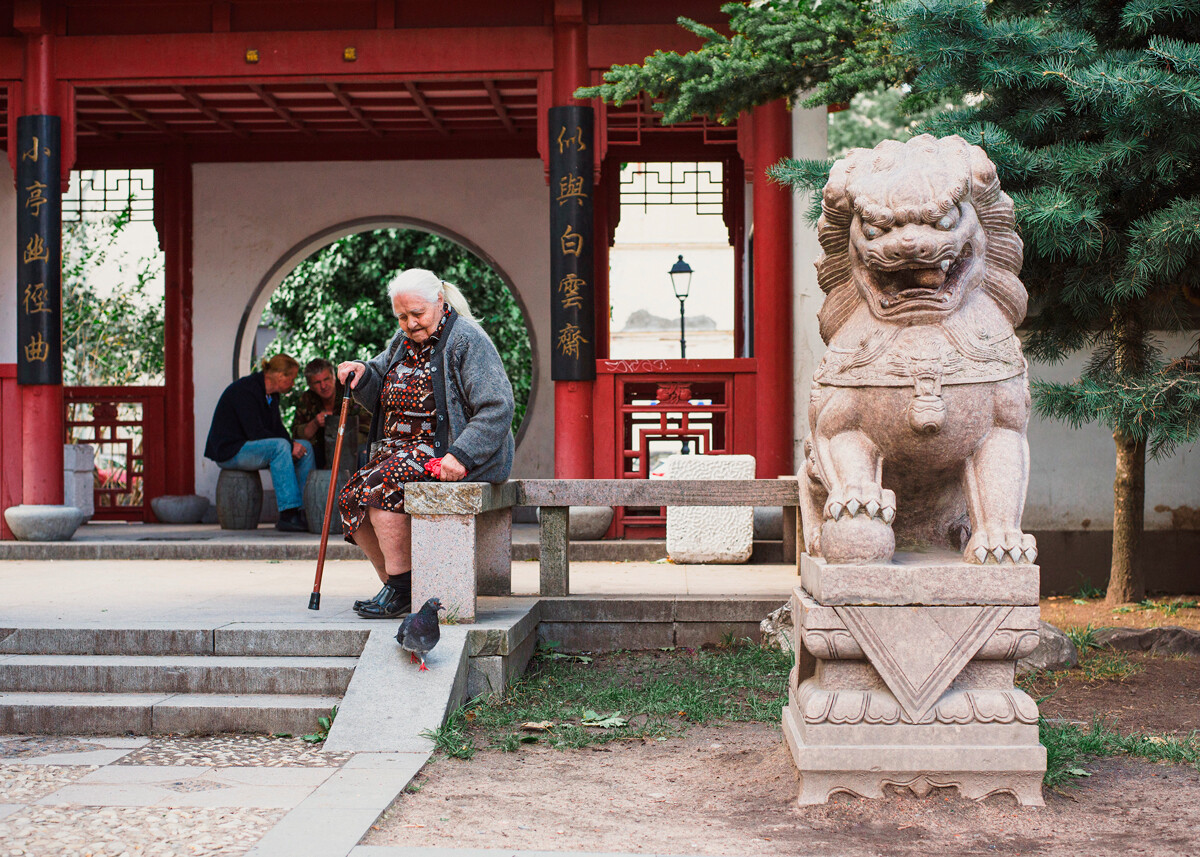
The main attraction of the garden is the ‘Wall of Nine Dragons’ - each has its own color, name and purpose. For example, ‘Yai-Tzu’ protects against disease, while ‘Pau Lao’ protects against sudden danger. If you are about to hand in your diploma, you should ask ‘Bi-si’ for help and ‘Qiu-nu’ for an influx of positive energy!
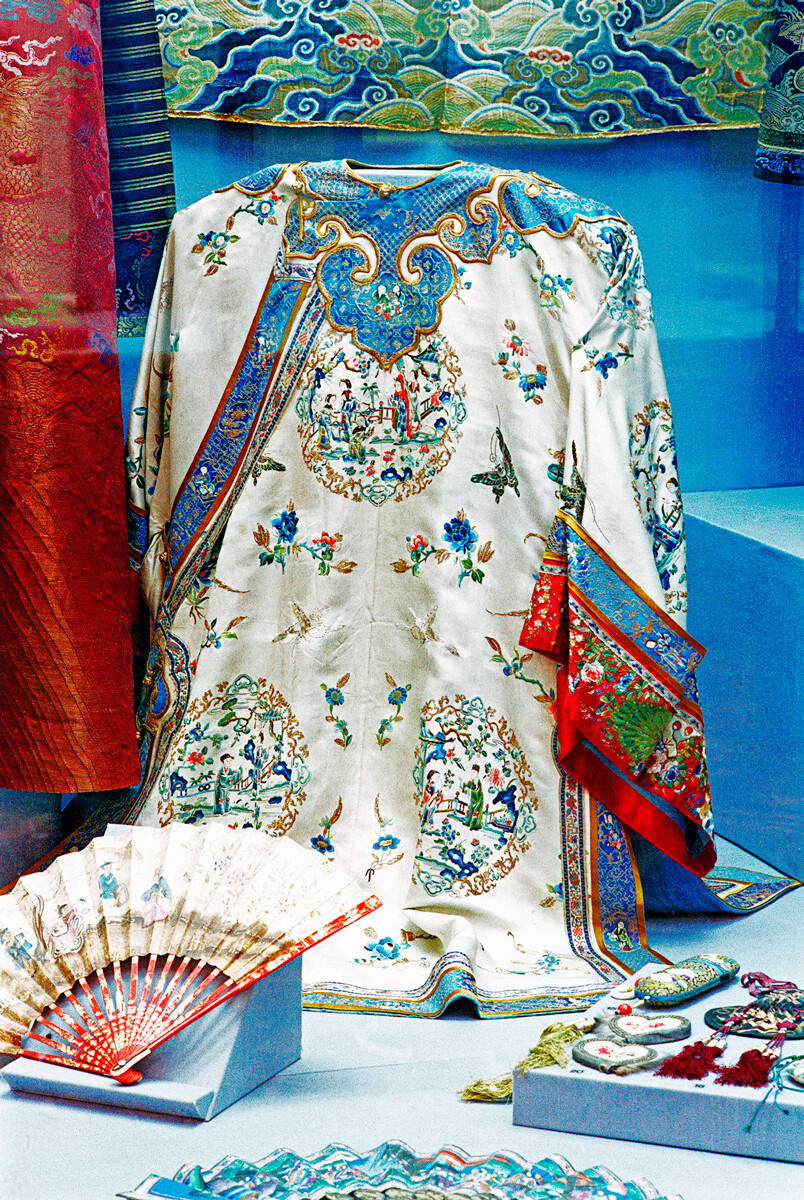
The museum has a large collection of Chinese art. Among them are elegant ceramic vases and jade ‘gu’ goblets, ‘bi’ burial disks,which symbolize the sky, a terracotta ‘daos’ head with a three-toed toad on top and even special houses for crickets made out of small pumpkins.
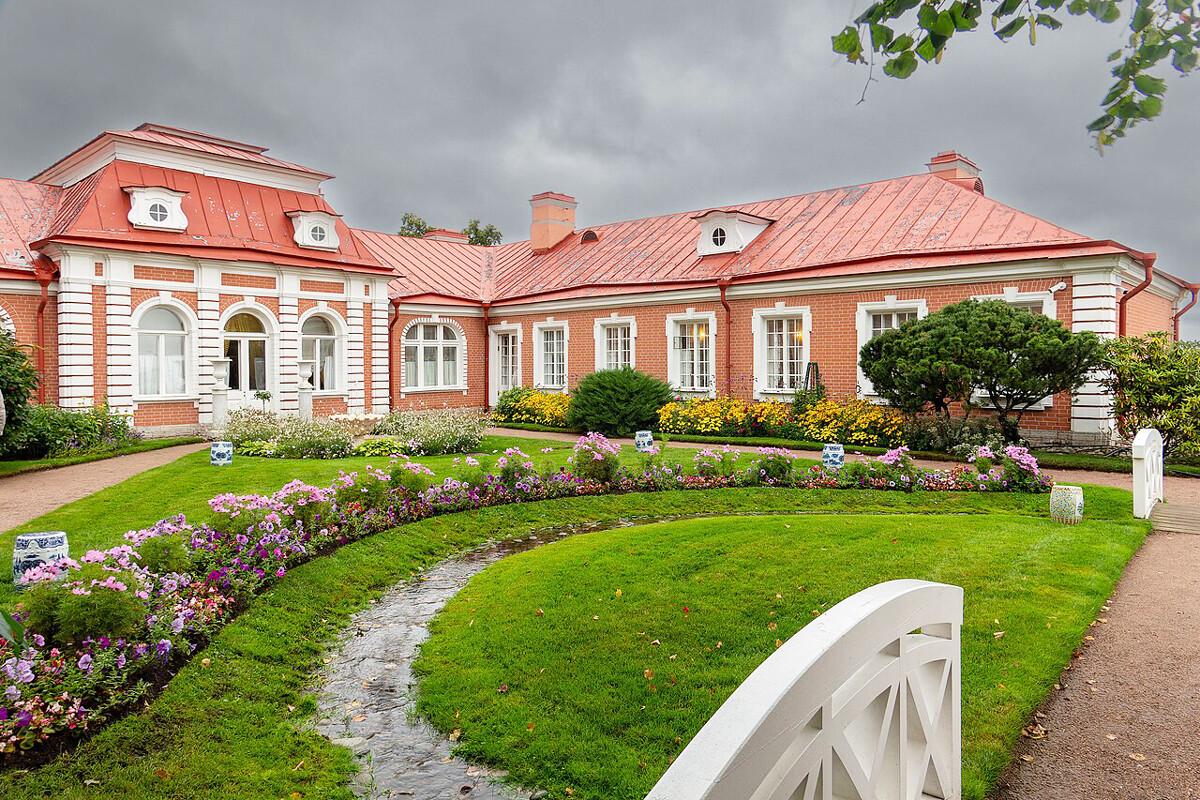
Next to the small Montplaisir Palace in Peterhof near St. Petersburg, there is an intimate Chinese garden with sandy paths and the ‘Rakovina’ and ‘Vaza’ (‘Sink’ and ‘Vase’) fountains. It was created almost by accident: after the reconstruction of the bath house, a strip of land remained between the building and the sea. So, it was decided to create a tiny garden on it: a pond, hidden by thick greenery, a pagoda, bridges and, finally, a grotto, from which water poured into two marble bowls.
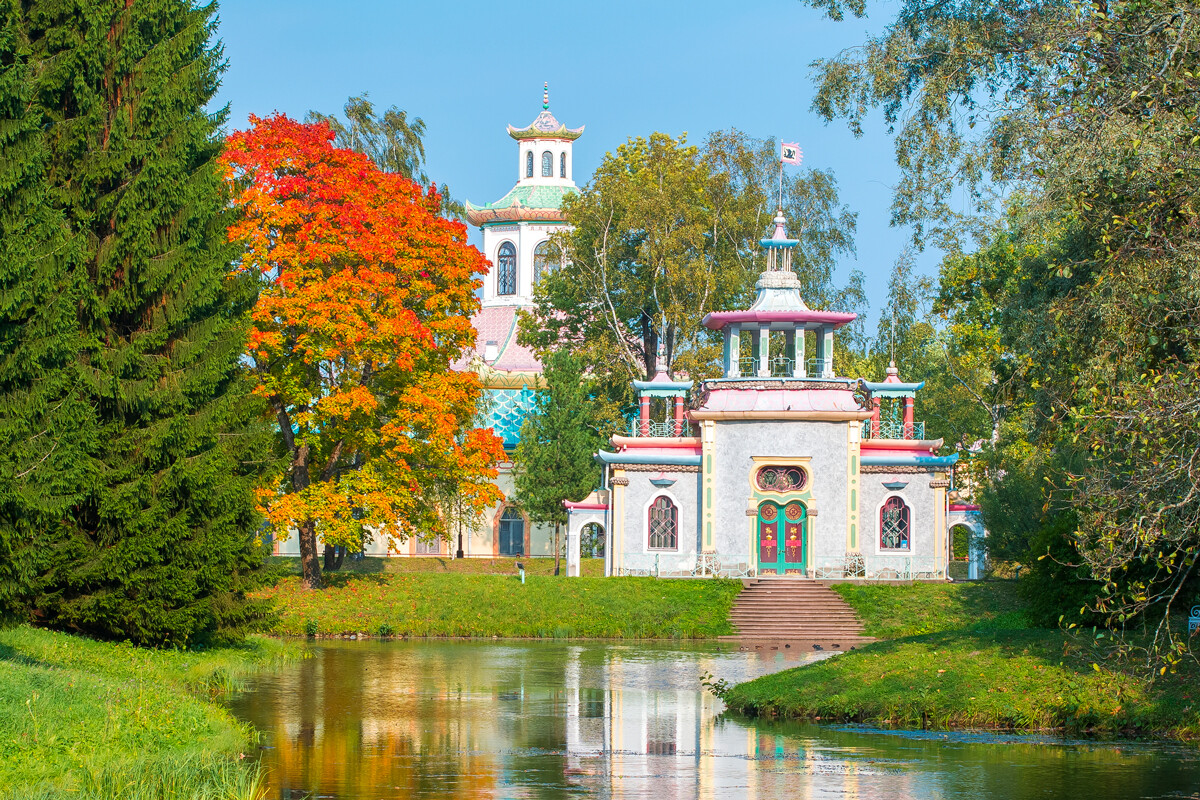
Having seen a Chinese settlement with neat houses in the Swedish town of Drottingholm, Catherine II decided to create her own village - in Tsarskoye Selo near St. Petersburg. Architects Antonio Rinaldi and Charles Cameron used one of the empress’ favorite engravings as a source of inspiration. Under Alexander I, guests of the emperor were accommodated in the Chinese village. For example, Nikolai Karamzin worked there on the history of the Russian state. The village can be reached by one of five bridges, for example, with the help of the ‘Drakonov’ bridge, which is decorated with four metal figures of these magic winged animals.
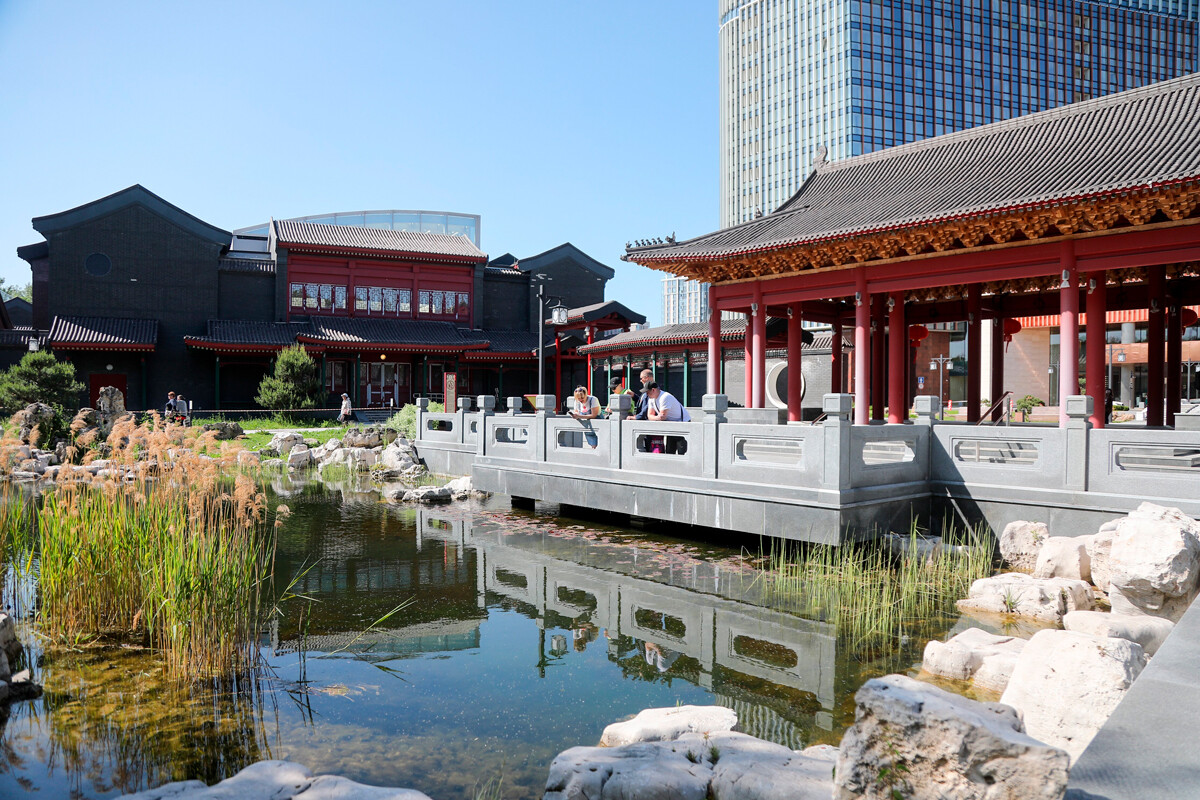
The largest traditional Chinese park in Europe - its area is more than five hectares. It is designed in the traditions of classical landscape architecture and all the buildings are in the style of Siheyuan, the houses of Northern China. You can immerse yourself in a serene atmosphere, leisurely stroll along the paths and admire the local beauties - the gazebo of the Wanyue moon gazebo, the Linglong Refinement pond, the Fenghe Beautiful Day gazebo, the Haitang Chinese Apple Tree Pavilion and the Tea Ceremony House. And, of course, there is a monument to Confucius.
The plants also grow authentic for Beijing and Shanghai - apple trees, plum trees, Watereri pines, weeping willows and black birches. And, in spring, peonies and crocuses bloom there.
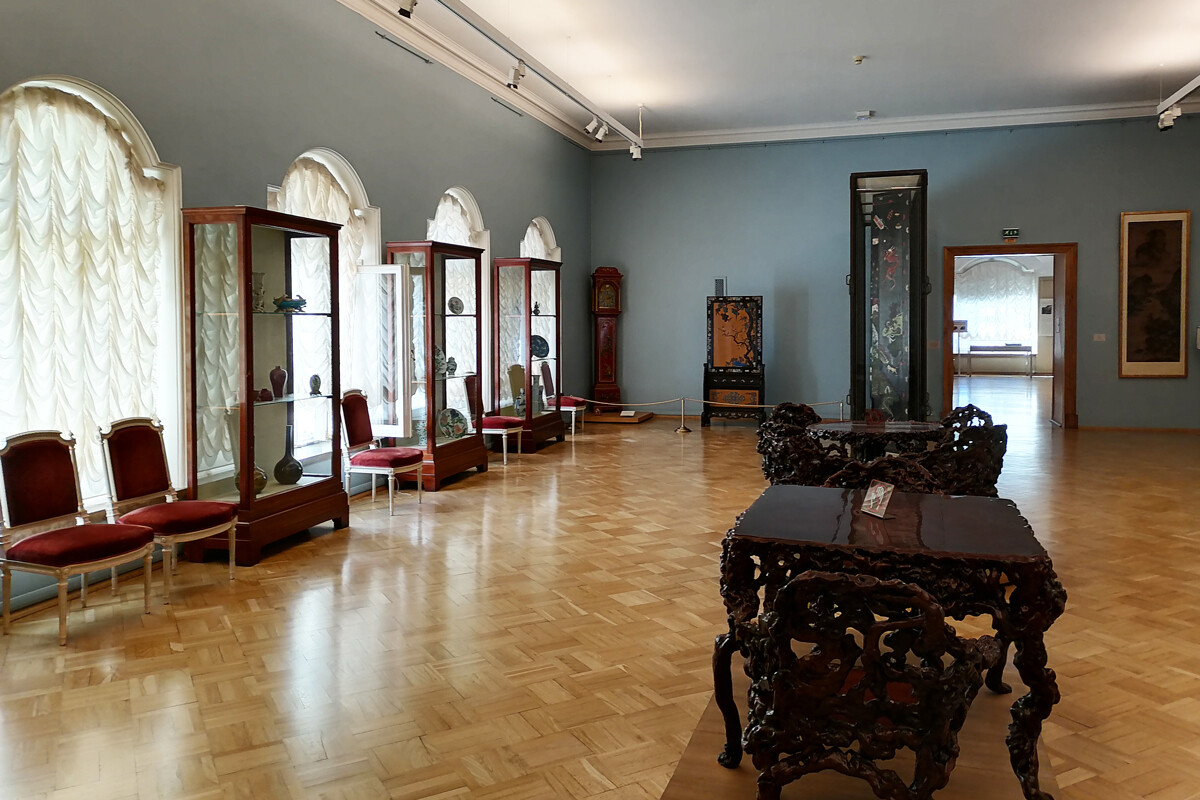
Peter I was one of the first to begin putting together a Chinese collection: he exchanged gifts with Emperor Kangxi and was interested in outlandish objects, mechanisms and works of art. Part of his collection is kept in the Hermitage. In addition, the museum contains one of the largest collections of New Year’s ‘Nian Hua’ paintings from the late 19th – early 20th centuries, works of carved stone, furniture and much more. For example, a bronze pool for goldfish, bronze iceboxes decorated with a dense floral pattern.
Dear readers,
Our website and social media accounts are under threat of being restricted or banned, due to the current circumstances. So, to keep up with our latest content, simply do the following:
Subscribe to our Telegram channel
Subscribe to our weekly email newsletter
Enable push notifications on our website
Install a VPN service on your computer and/or phone to have access to our website, even if it is blocked in your country
If using any of Russia Beyond's content, partly or in full, always provide an active hyperlink to the original material.
Subscribe
to our newsletter!
Get the week's best stories straight to your inbox